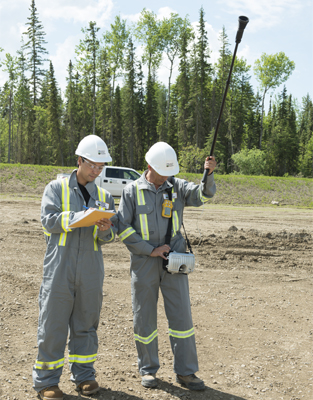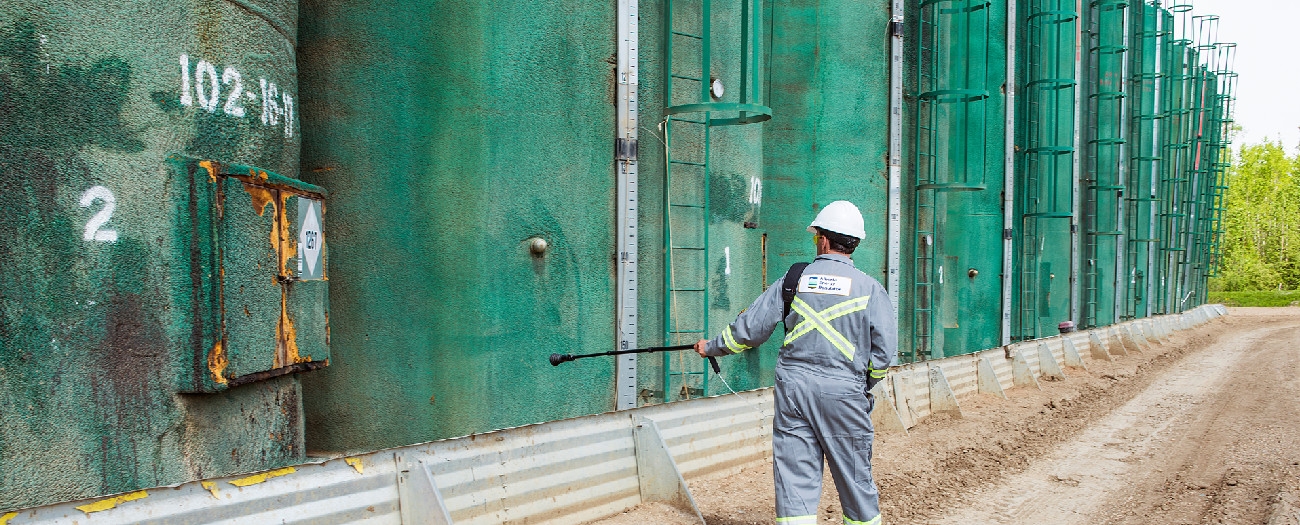Gas measuring device plays a critical role when responding to emergencies
Alberta - April 17, 2017Making the invisible visible doesn’t take superpowers. It takes the right technology.

The AER uses an air-quality measuring device known as an infrared spectrometer to detect “fugitive emissions”—gas fumes that escape from pipes undetected. They are invisible to the naked eye, potentially dangerous, and need to be caught.
Fugitive emissions don’t stand a chance against the spectrometer—a backpack-contained piece of technology that’s vital during an incident for helping AER staff move efficiently through an emergency response.
“Results are available in 20 seconds, which is a very fast response time. Not only does it take 2000 measures per second, but the data can be transmitted in real time, so our response to the situation time is that much quicker,” says Al Duben, air specialist with the AER. “When you’re dealing with an emergency, seconds matter.”
Catching waves
The infrared spectrometer measures wavelengths, including those of invisible gas.
The spectrometer features a handheld personal digital assistant (PDA), which records and tracks the measurement data, and a wand that is used to take measurements. It measures 25 gases simultaneously with the PDA and can identify an additional 4000 gases when the data is further analyzed.
While that number may seem overwhelming, science comes to the rescue to simplify things. The readings have fingerprint accuracy because you can’t reproduce wavelengths. It compares the measurements to known substances in a database, so we know exactly what we are dealing with, which makes it easier for us to know how to deal with it.
“The data from this device is very powerful. We have research-grade information in the palm of our hands,” adds Duben.
Kate Bowering, Writer


